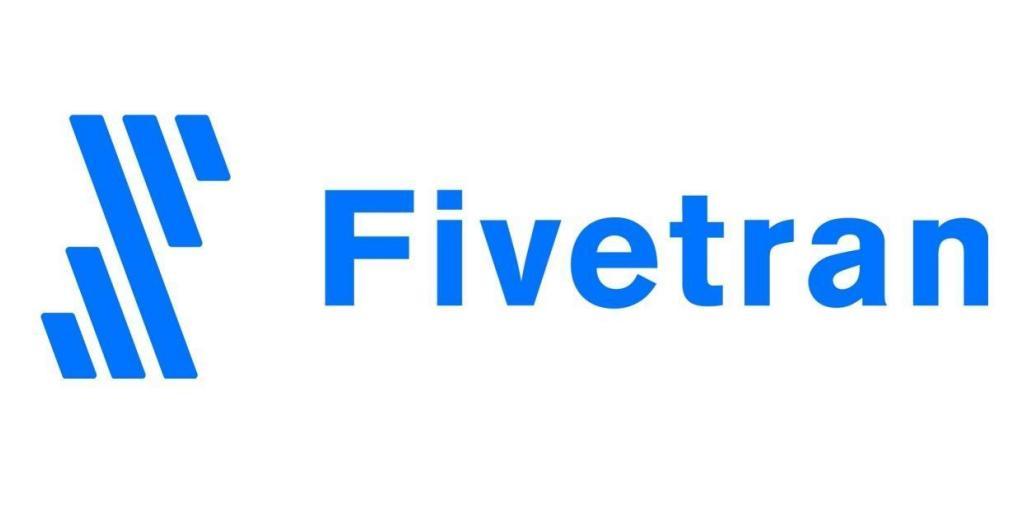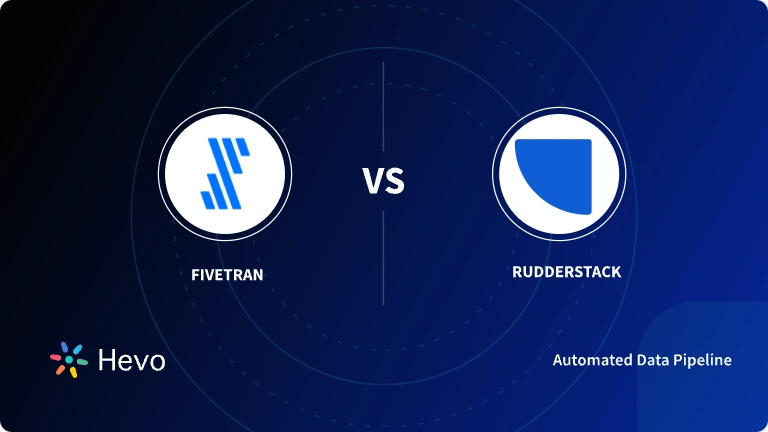 Key Takeaways
Key TakeawaysChoosing between Fivetran and Airflow for data integration depends on technical requirements, budget, and team capabilities. Below are the key differences to consider:
Comparison Factor 1: Ease of Use and Setup
Fivetran offers plug-and-play connectors while Airflow requires custom development and infrastructure management.
Comparison Factor 2: Pricing and Total Cost of Ownership
Fivetran uses volume-based pricing while Airflow is open-source but requires significant operational overhead.
Comparison Factor 3: Customization and Flexibility
Airflow provides unlimited customization while Fivetran offers limited but reliable pre-built solutions.
Fivetran vs Airflow? Should you pay for a managed ELT platform like Fivetran, or dive into the complexity of building custom pipelines with Airflow?
Maybe Fivetran’s monthly active rows pricing is inflating your data budgets. Or perhaps you’re tired of Airflow’s steep learning curve and the complexity of setting up DAGs. You might be wondering if it’s worth paying premium prices for Fivetran’s simplicity, or if your team has the bandwidth to manage Airflow’s technical demands.
Both Fivetran and Airflow solve fundamentally different problems. While Fivetran follows a “set it and forget it” dream with pre-built connectors and minimal setup, Airflow gives you complete control but demands significant technical expertise and ongoing maintenance.
Choosing between the two can make or break your data stack. In this article, we’ll differentiate between Fivetran and Airflow’s hidden costs, the learning curves and the practical considerations. In the end, you should have a definite answer on which tool to choose.
Table of Contents
What is Fivetran?
G2 Rating: 4.2(377)
Capterra Rating: 4.7(20)
Fivetran is a cloud tool that moves your data from different places into one spot, like a data warehouse, without you having to write any code. It makes your data pipelines easy and automatic, so your business always has fresh and accurate data ready to use.
Fivetran connects to apps, databases, and cloud services, then copies and updates your data in your warehouse automatically. This means you don’t have to do it yourself, saving you time and avoiding mistakes.
You should pick Fivetran if you want something quick to set up, with lots of ready-made connectors, and that keeps your data updated almost in real-time. What makes Fivetran special is how it handles everything for you, that is, like changes in your data structure, updates, and scaling, so you can spend less time managing data and more time using it to make smart decisions.
Key Features of Fivetran
- Connects to 700+ data sources with ready-to-use connectors:
- You get your data fast without building connectors, so you save time and avoid technical headaches.
- Supports incremental updates and efficient data movement:
- You only move new or changed data, making syncing quicker and cheaper for you.
- Simple, user-friendly interface and API:
- You can easily set up and manage data pipelines, without coding, so you work faster and stress less.
- Handles schema changes automatically:
- You don’t have to fix pipelines when data changes, because Fivetran adjusts everything for you.
Looking for different options? Check out alternatives to Fivetran here.
Worried about unpredictable Fivetran bills?
What is Apache Airflow?

G2 Rating: 4.3(86)
Capterra Rating: 4.6(10)
Airflow is an open-source tool that helps you build, schedule, and manage data workflows using Python code. It’s great if you need to handle complex or custom data pipelines and want full control over every step.
With Airflow, you can automate tasks like moving data or running scripts, all organized in one place. Its visual dashboard makes it easy to track your workflows and fix any issues quickly.
I would recommend Airflow if you’re comfortable with coding and want the freedom to design your own workflows from scratch. It’s perfect for teams who need flexibility, customization, and the ability to scale as their data grows.
Key Features and Functionalities
- Workflows as code (DAGs):
- You define your workflows in Python code, so you get full control and flexibility to build exactly what you need.
- Highly extensible with custom plugins:
- You can add your own operators and hooks, so you can easily connect to any system or handle any special task your project requires.
- Scales to handle big workloads:
- You can run Airflow on one server or scale it out to handle huge data pipelines, so you never outgrow your workflow tool.
- Visual monitoring and scheduling:
- You get a web-based dashboard to see your pipelines, check progress, and fix issues quickly, so you always know what’s happening with your data
If you are looking for an airflow alternative, you can also check out our blog on Hevo vs Airflow.
Fivetran vs. Airflow vs. Hevo: Detailed Comparison Table
 | |||
| Reviews |  4.2 (400+ reviews) |  4.3 (50+ reviews) |  4.5 (250+ reviews) |
| Core Focus | Managed ELT | Workflow orchestration | No-code ELT |
| Setup Complexity |  |  | |
| Pricing Model | Usage-based | Free (infra cost) | Tiered |
| Free Plan |  |  |  |
| Connector Count | 500+ | 150+ | |
| Real-time Support |  |  |  |
| On-premises Connectors |  |  | |
| Custom Connectors | Limited | Highly customizable | Webhook only |
| Transformations | Basic – SQL | Advanced – Python/SQL | Visual, Python, SQL |
| Reverse ETL |  |  | |
| Data Quality & Validation | Basic | Excellent | Good |
| Error Handling | Good | Excellent | Good |
| Deployment Options | SaaS only | Self/cloud/hybrid | Cloud SaaS only |
| Scalability |  |  |  |
| Security & Governance | SOC 2, GDPR | Implementation dependent | SOC 2, RBAC |
| Customer Support | Excellent | Community + Paid | Good |
| Learning Curve |  |  |
For more tabular comparisons like this, you can check out blogs on Fivetran vs Matilion and Alooma vs Fivetran vs Hevo.
Fivetran vs Airflow: In-depth Feature & Use Case Comparison
1. Data Processing Architecture (ETL vs ELT Approach)
Fivetran follows a pure ELT (Extract, Load, Transform) approach where raw data is first loaded into your data warehouse, then transformed using SQL or dbt. This leverages your warehouse’s computing power and storage capabilities, making it faster for initial data loading and more cost-effective for large datasets.
Apache Airflow is flexible enough to handle both ETL and ELT workflows, but traditionally excels at ETL (Extract, Transform, Load) where data is processed and cleaned before reaching the destination. You can build complex transformation logic using Python, but this requires more processing power during the pipeline execution.
My vote goes to Fivetran. G2 Reviews such as “The platform is very friendly to set up the first connections and get started piping data from all your sources into the destinations of your choice” show how Fivetran leads with its ELT-first design compared to custom ETL pipelines in Airflow.
2. Connector Ecosystem & Pre-built Integrations
Fivetran offers 500+ pre-built, fully-managed connectors covering databases, SaaS applications, files, and event streams. Each connector is maintained by Fivetran’s team, automatically handling schema changes, API updates, and error recovery. You literally just authenticate your source, and data starts flowing within minutes.
Apache Airflow comes with limited built-in connectors but offers unlimited customization through Python operators and hooks. You can connect to anything, but you’ll need to write custom code, handle authentication, manage schema changes, and maintain these connections yourself over time.
My vote goes to Fivetran. Unless you have very unique data sources, Fivetran’s connector ecosystem wins hands down. G2 reviews like “saved us months of development time” and “connectors just work without maintenance” show why 500+ ready-to-use integrations beat having to build everything from scratch in Airflow.
Hevo distinguishes itself in the data integration landscape with its exceptional features and user-centric approach. Unlike Fivetran and Airflow, Hevo offers:
- Competitive Pricing: Benefit from Hevo’s cost-effective solutions, providing high-quality data integration at a more affordable price.
- Custom Transformations: Hevo’s robust transformation capabilities allow you to tailor data workflows precisely to your needs.
Join over 2,000+ satisfied customers, including ThoughtSpot, who rely on Hevo for their data integration needs. Don’t just take our word for it; see why we are rated 4.3 on G2.
Get Started with Hevo for Free3. Operational Maintenance & Infrastructure Management
Fivetran is a fully-managed SaaS platform where you don’t touch any infrastructure. No servers to maintain, no scaling to worry about, no security patches to apply. Fivetran handles monitoring, error recovery, performance optimization, and keeps everything running 24/7 while you focus on using your data.
Apache Airflow use cases require you to set up, configure, and maintain the entire infrastructure stack. This includes web servers, schedulers, databases, worker nodes, monitoring systems, security configurations, and scaling mechanisms. You’re responsible for uptime, performance tuning, and troubleshooting when things break.
My vote goes to Fivetran. Fivetran’s zero-maintenance approach is a clear winner, unless you have a dedicated DevOps team and love managing infrastructure. G2 reviews like “Its out-of-the-box connectors are very robust, requiring minimal setup and almost no ongoing maintenance” as major advantages over self-hosted Airflow deployments.
4. Customization & Complex Workflow Capabilities
Fivetran is designed for straightforward data replication and basic transformations. You’re limited to their pre-built connectors and simple SQL/dbt transformations. If you need custom business logic, complex data processing, or multi-step workflows with conditional branching, Fivetran simply can’t handle it.
Apache Airflow excels at building sophisticated data workflows with unlimited customization. You can create complex DAGs with conditional logic, parallel processing, cross-system orchestration, custom Python functions, external API calls, and intricate dependency management. If you can code it in Python, Airflow can orchestrate it.
My vote goes to Apache Airflow. Airflow’s flexibility is unmatched, especially for organizations with complex data requirements, custom business logic, or multi-system orchestration needs. G2 Reviews like “Ease of deployment “, or “Orchestration of the jobs is very easy and done with ease, along with many options for customisation” show that Fivetran’s standardized approach simply cannot provide.
5. Total Cost Predictability
Fivetran pricing is a transparent usage-based pricing model (Monthly Active Rows + connector fees) that’s easy to forecast and budget. You pay for what you use, costs scale predictably with data volume, and there are no surprise infrastructure bills or hidden engineering costs.
Apache Airflow is free open-source software, but the total cost includes infrastructure hosting, engineering salaries for development and maintenance, monitoring tools, and operational overhead. These “hidden” costs can quickly exceed Fivetran’s subscription fees, especially when factoring in engineer time and opportunity costs.
My vote goes to Apache Airflow. G2 reviews like “Airflow is quick to set up, well supported, and free” show that Airflow is cheaper to use and justifies the higher operational costs. While Fivetran costs can vary depending on your usage,w ith users saying “drastically run up our Fivetran costs if we aren’t watching carefully”
When to choose Fivetran?
Fivetran is perfect for teams who want their data pipeline to “just work” without any fuss. Think of it as the iPhone of data integration – sleek, simple, and handles everything behind the scenes. If you’re tired of spending weeks building connectors or constantly fixing broken data pipelines tools like Fivetran lets you focus on analyzing data instead of moving it around.
What makes Fivetran great:
- 500+ plug-and-play connectors – From Salesforce to MySQL, setup takes minutes not months
- Zero maintenance required – No servers, updates, or 3 AM emergency calls to worry about
- Non-technical friendly – Your marketing manager can set up pipelines without coding.
Where Fivetran falls short:
- Limited customization – Stuck with standard approaches, no creative workflow flexibility
- Expensive at scale – Costs spiral quickly as data volume and frequency increase
- Basic transformations only – Complex business logic requires additional tools
Explore how Fivetran and ADF differ in key features and use cases, helping you choose the right tool for your data integration needs.
When to Choose Apache Airflow?
Airflow is for teams who need complete control over their data workflows and aren’t afraid to get their hands dirty with code. It’s like having a Swiss Army knife – incredibly powerful and versatile, but you need to know how to use each tool properly. Perfect for complex scenarios where pre-built solutions just won’t cut it.
What makes Airflow powerful:
- Unlimited customization – If you can code it in Python, Airflow can orchestrate it
- Complex workflow mastery – Handle dependencies, parallel processing, and conditional logic seamlessly
- Free and battle-tested – Open-source with proven scalability at Netflix, Airbnb, and more
Where Airflow gets challenging:
- Steep learning curve – Requires Python skills and data engineering expertise
- Infrastructure responsibility – You manage servers, scaling, monitoring, and troubleshooting
- Time-intensive deployment – Weeks to months before the first production pipeline
Why Consider Hevo as an Alternative?
When it comes to comparing Hevo vs Fivetran vs Airflow, Hevo Data is a step forward. How? Hevo sits comfortably in the middle ground between Fivetran’s simplicity and Airflow’s complexity. It’s like getting the best of both worlds – easy enough for business users but powerful enough for technical teams. If you want modern features without the enterprise price tag or engineering overhead, Hevo deserves a serious look.
What makes Hevo stand out:
- Real-time processing – Get fresh data as it happens, not hours later
- Built-in transformations – Handle data prep without switching between multiple tools
- Best of both worlds – Easy visual interface with customization when needed
Where Hevo has room to grow:
- Smaller connector library – 150+ connectors vs Fivetran’s 500+, though it covers most needs
- Mid-market focus – Better for SMBs than Fortune 500 enterprise requirements
- Newer market player – Less proven track record than established competitors
If you are looking for other Fivetran Alternatives, have a look at some other comparisons.
- Fivetran vs Informatica
- Fivetran vs Stitch
- Fivetran vs Supermetrics
- Fivetran vs AWS Glue
- Fivetran alternatives
Conclusion
Fivetran excels with its plug-and-play connectors and zero-maintenance approach; ideal for teams wanting hassle-free data replication. Airflow dominates when you need complete control over complex workflows and custom data orchestration for sophisticated projects. Both deliver powerful data integration capabilities, but many users report that Fivetran gets costly at scale while Airflow demands significant engineering resources and infrastructure management.
That’s where Hevo delivers the sweet spot: it combines ease-of-use with powerful features at predictable pricing that won’t surprise you. With real-time processing, built-in transformations, and 150+ connectors, Hevo simplifies data integration without the complexity or cost concerns.
Ready to experience the difference? Start your 14-day free trial today and discover how Hevo can streamline your data workflows while keeping costs under control.
FAQ on Fivetran vs Airflow
1. What is the difference between Airflow and Fivetran?
Airflow is an open-source tool for building and managing custom data workflows with code, while Fivetran is a managed, no-code solution for easy data integration using prebuilt connectors.
2. Is Airflow good for ETL?
Yes, Airflow is good for ETL, especially if you want to design complex or custom pipelines and are comfortable with coding.
3. Who competes with Fivetran?
Fivetran’s main competitors include Hevo Data, Airbyte, Rivery, Talend, AWS Glue, Matillion, Stitch, IBM DataStage, Meltano, and Skyvia.
What are the disadvantages of Fivetran?
Fivetran can be expensive, isn’t ideal for complex transformations, and offers less flexibility compared to more customizable tools like Airflow.








